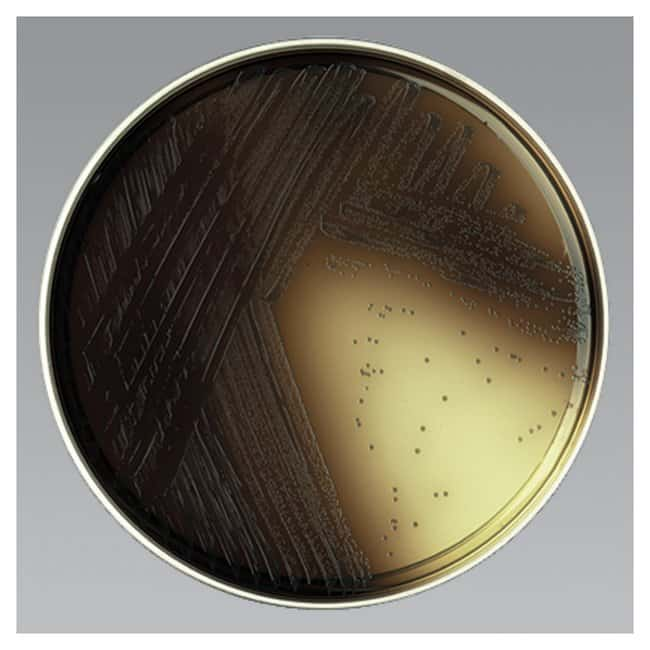A selective and differential culture medium called Bile Esculin Agar (BEA) is mainly utilized for the isolation and tentative identification of group D streptococci and enterococci. This medium takes use of the bacteria’s capacity to hydrolyze esculin when bile salts are present. A dark brown or black precipitate is formed when ferric citrate in the medium combines with the byproduct of esculetin, which is created when esculin is hydrolyzed. These bacteria may be distinguished from other microbes by their distinctive colour shift.

Table of Contents
Composition of Bile Esculin Agar
- Peptone: 5.0 g/L
- Bile Salts: 20.0 g/L
- Esculin: 1.0 g/L
- Ferric Citrate: 0.5 g/L
- Agar: 15.0 g/L
- Distilled Water: 1 L
Preparation of Bile Esculin Agar
The main ingredients and their functions of bile esculin agar are as follows: it is a selective and differential medium that is used to isolate and identify group D streptococci and enterococci based on their capacity to hydrolyze esculin in the presence of bile salts. Except for enterococci and group D streptococci, bile salts inhibit the growth of most gram-positive organisms. Esculin is a glycoside that, when hydrolyzed, releases esculetin and glucose. Ferric citrate reacts with esculetin to form a dark brown or black complex. The reaction between esculetin and ferric ions from ferric citrate is visible in the medium and indicates a positive reaction.
Interpretation of the Results
The medium becomes black, signifying the hydrolysis of esculin. This is a good finding that points to the possibility of group D streptococci or enterococci. The medium does not become black. This suggests that the bacterium is not an enterococcus or group D streptococcus since it shows no signs of esculin hydrolysis.
Uses of Bile Esculin Agar
- It is advised to employ it as a differential medium for the separation and presumed identification of group D streptococci and enterococci.
- It is employed to identify cultures of isolated organisms in combination with other biochemical assays.
- Among the Enterobacteriaceae, BEA is utilized for the presumed identification of Enterobacter, Klebsiella spp., and Serratia spp.
- A trustworthy method of differentiating group D streptococci from non-group D streptococci is to employ the biliary esculin test on this medium.
- When isolating and identifying Yersinia enterocolitica from food and animal feed, bile esculin agar is advised.
Limitations of Bile Esculin Agar
- The main isolation of patient specimens is not intended for use with the media. It is only appropriate for use with isolated organism cultures.
- The purpose of bile esculin agar is not to be used in human illness or another condition diagnosis.
- Colonies from pure culture should be subjected to biochemical, immunological, molecular, or mass spectrometry tests for thorough identification.
- Certain species of Listeria monocytogenes, Aerococcus, and Staphylococcus may thrive and hydrolyze esculin when bile is present. Little black colonies will emerge due to L. monocytogenes.
- A strong BEA inoculum may make it challenging to interpret the biliary esculin test results.
- The bile’s capacity to prevent the formation of more gram-positive bacteria that may hydrolyze esculin is diminished by an excess of inoculum.
Frequently Asked Question
What is Bile Esculin Agar (BEA)?
Bile Esculin Agar (BEA) is a selective and differential culture medium used to isolate and identify enterococci and group D streptococci based on their ability to hydrolyze esculin in the presence of bile salts.
How does BEA work?
BEA differentiates bacteria based on their ability to hydrolyze esculin. When esculin is hydrolyzed by the bacteria, esculetin is produced. Esculetin reacts with ferric ions from ferric citrate in the medium, forming a dark brown or black complex. This indicates a positive result for esculin hydrolysis.
What does a positive result look like on BEA?
A positive result is indicated by the formation of a dark brown to black colouration in the medium around the bacterial growth.
Related Article

